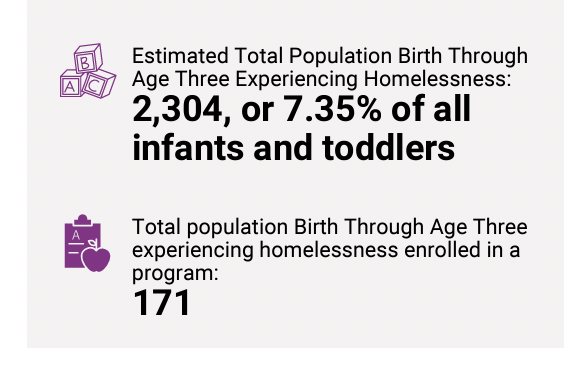Jaleesa Hall was in her sophomore year at Clark Atlanta University, doodling in her notebook, when the name Raising a Village came to her. When Hall began an education-based foundation almost a decade later, she knew exactly what she’d call it.
Today, Raising a Village is a D.C.-based organization dedicated to buiding better communities through improving education, health and access to the arts. The organization’s signature program, Driven 2 Succeed, provides support and tutoring for students in nine D.C. schools.
Raising a Village rose out of work Hall did in college. During her time there, Hall founded the Driven Student Organization to encourage student engagement on campus. Inspired by that work, Hall used the knowledge she gained to inform Raising a Village. Since its launch in 2019, Raising a Village has served over 1,000 middle and high school students. Over half of the students who took advantage of Raising a Village’s programs raised their grades, according to the organization’s 2022-2023 report.
In 2023, Raising a Village was one of over 140 organizations selected by the Biden administration as champions for The National Partnership for Student Success, a public-private partnership dedicated to addressing COVID-19’s devastating impact on school children. Hall believes the organization was nominated for its work to ensure that students were able to keep learning through the pandemic.
Raising a Village is currently working to launch its new program, At the Table, at family shelters across the District. Taking a two-generational approach, the program will help parents earn high school education equivalents and create support networks. Meanwhile, students will participate in Raising a Village’s summer acceleration program, which generally includes more artistic, health and wellness elements than homework-focused after-school programs.
Hall discussed the mission of Raising a Village and her hopes for the future in an interview with Street Sense.
The following conversation has been edited for length and clarity.
Tell me about the mission of Raising a Village and the organization’s programs.
Our education pillar is the Driven 2 Succeed program. The program for K-12 students provides support and academic interventions, particularly high-impact tutoring, in math and English. We also provide a social-emotional learning curriculum, understanding that it’s not just about academics, it’s about the whole child. Then we provide college and career readiness opportunities for our high school learners.
We provide in-school support, which is where our tutors are in the school doing pullouts in math and English classes. We have lunch and learn. There may be students who are dealing with some real issues of truancy. They are usually put on a list for credit recovery. So we take over the lunch period and provide meals. That’s the incentive — come eat and get your work done. We have homework help after school.
Then there’s the summer acceleration, which is our summer program in our shelters and community learning centers. It is more like a summer camp that deals with arts, physical fitness and academics. It’s usually for students who are coming into a new grade, like incoming sixth graders or students going to high school.
At the Table is our two-generational program, where we are going to provide free English language learning and GED prep to parents and guardians who need it. We’ll also have the Guardian Hub, parent and guardian circles where we provide resources and community connections. And then we also have medical checks and health checks. How do you take care of yourself in terms of mental health and physical health, so that you can be there for your children and you can provide for them? That is At the Table, the next pillar we are launching.
Why do you think Raising a Village’s mission is so important?
The most high-performing communities have those resources prevalent in their community, right? They have good schools, which is our education pillar. They have access to parks, recreation and gyms. They also have ample grocery stores. That is the health and wellness pillar. Also, these communities typically have cultural capital around them. So they have a place for entertainment and culture, either through murals or a stadium or a place to see a show.
And so what Raising a Village tries to do is to journey along underserved communities that may not necessarily have ample resources in those areas and use our services to fill their cup. And so that’s why those three pillars are important for us. And that’s why we focus on those three pillars in our organization.
How does Raising a Village’s work affect people experiencing homelessness?
Raising a Village is a place-based service, meaning we go where the people are. That is intentional, because we understand that distance can serve as a barrier for folks to receive support, especially those who are underserved and unhoused.
We are growing our partnerships in transitional housing shelters and providing the services that they need. For example, at the Aya transitional housing shelter, while the children are experiencing our summer acceleration program, our adults will be experiencing At the Table.
We provide opportunities for families and students through this program. We’re helping them create a legacy of thriving, not surviving. That’s how our services are meeting people where they are, especially the unhoused.
At the Table is launching in February. The Department of Human Services wants us to launch in a few places so that’s what we’re narrowing down now.
What’s the meaning behind the name Raising a Village?
Moving from a campus organization to a nonprofit, the name drove our mission and culture. It helped solidify the identity of the organization. There are just certain things we have to do and we have to exude.
We can’t say we’re Raising a Village and be divisive. We can’t say we’re Raising a Village and not be community-minded. We can’t say we’re Raising a Village and not create a loving community. I was inspired by the movement that I did in my young adult life but the name did codify the work that I was trying to do.
Raising a Village launched shortly before the beginning of the pandemic. How did the pandemic affect your organization?
Raising a Village was launched officially in the spring of 2019, moving out of the pilot phase and into our first D.C. school. By January, we were in two affordable housing communities. We were growing in a matter of months. And then March happened, and the pandemic.
Within that time, Raising a Village had to be nimble. We had to figure out how we could meet the needs of the people in this new, strange context. Being primarily in affordable housing communities and schools, we knew that the digital divide was real. So we did a laptop loan program and a funder helped us give out laptop hotspots.
We journeyed alongside schools to be a part of that virtual classroom. We were one of the only education nonprofits that had access to Microsoft Teams in D.C. schools and our tutors and mentors were literally in those classrooms, listening to the lesson. The teacher would create breakout rooms for the tutor to work with struggling students. When other principals found out that we were doing that, we started to grow in the middle of the pandemic.
We also started breakfasts and giveaways at our affordable housing communities. Because kids are hungry and, a lot of times, school is the place they primarily get meals.
So yes, growing up in the middle of a world crisis is kind of cool, but it was stressful. All of our hands were on deck. I was out in the community, ensuring people had what they needed. But I think serving as the direct response, which Raising a Village prides itself on doing, helps people trust us and helps us grow as a young organization.
What is one of your favorite memories of working in the last couple of years?
The incoming of our tutors and mentors. When I started the organization, I recruited 25 myself. Now we have over 80. To see them excited to go into these community centers and schools to make an impact always brings my heart joy. I know that not only are they making a difference in our local children’s lives, but our children are also going to make a difference in their lives.
What was it like to be nominated as a champion for The National Partnership for Student Success?
It’s an interesting and blessed journey, but it’s hard, right? We were in a world crisis, so I was just trying to stop the bleeding. And so I wasn’t in it for me, it was to add value to the people I was serving.
Then the Department of Education called to say “You are an early adopter of what President Biden is trying to do.” Knowing the need is important on a national level is quite humbling. It’s also gratifying to know that Raising a Village is on the cutting edge of educating our children and supporting our families. And people want to hear more about how they can create systems change.
You used the phrase “add value.” What does that mean to you?
We don’t believe in having the missionary or savior complex, of coming into a community to say, “I’m going to help those people.” We come from an understanding that there’s good already taking place there. How can we add value to the good already there? How can we do the best of what you do? That is what we call a community-minded approach.
What’s the future of Raising a Village?
One of the goals is to expand Raising a Village to different cities. We were offered the opportunity several times early on to do that. But I believe in focusing on where your feet are planted. And so I wanted to make sure that D.C., which is our home base, was secure, before trying to expand and grow. Now that we have established roots here, the goal is to expand our work in other cities. Stay tuned.








